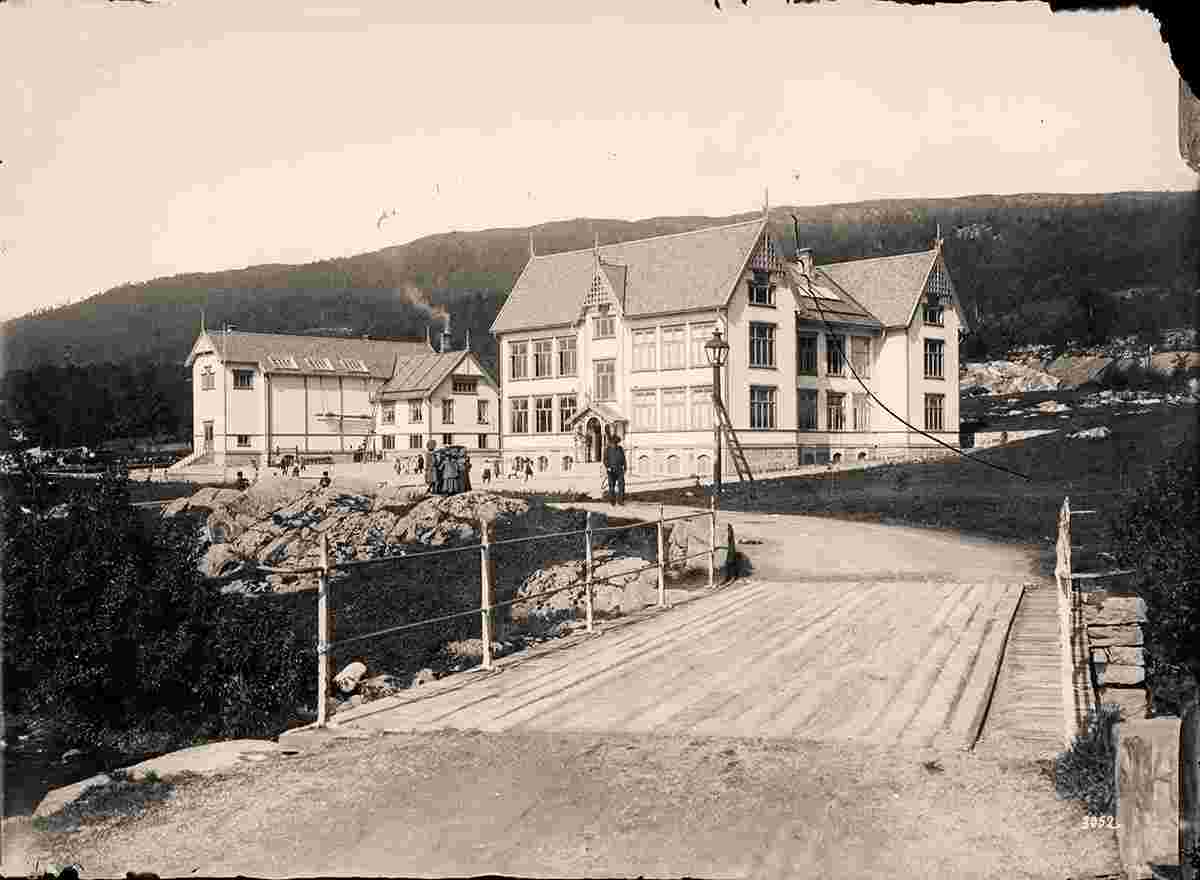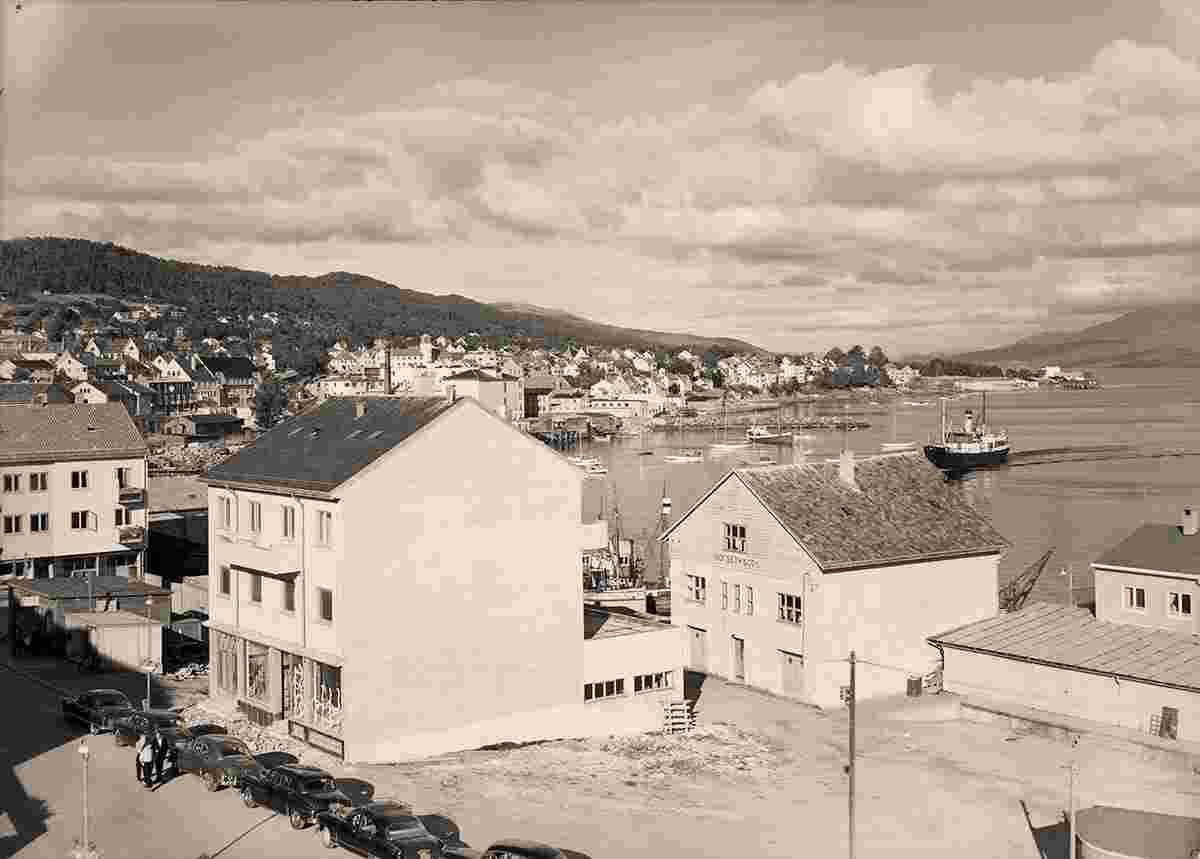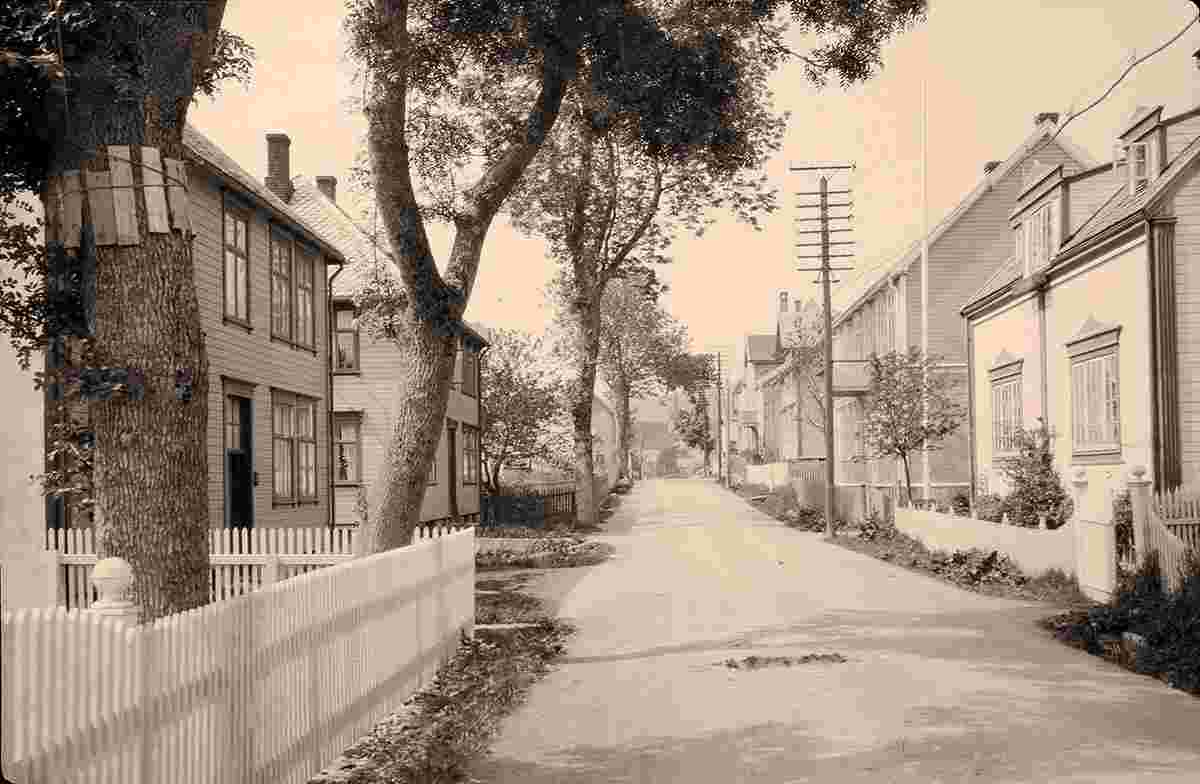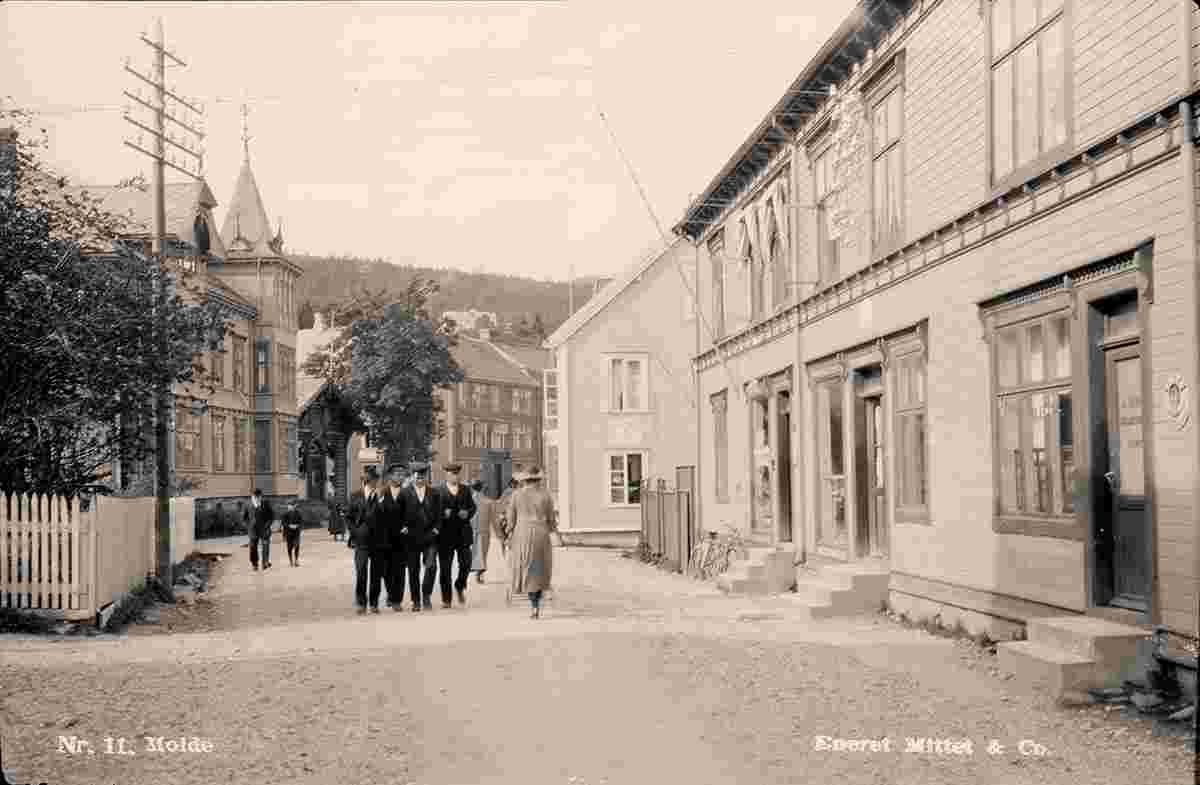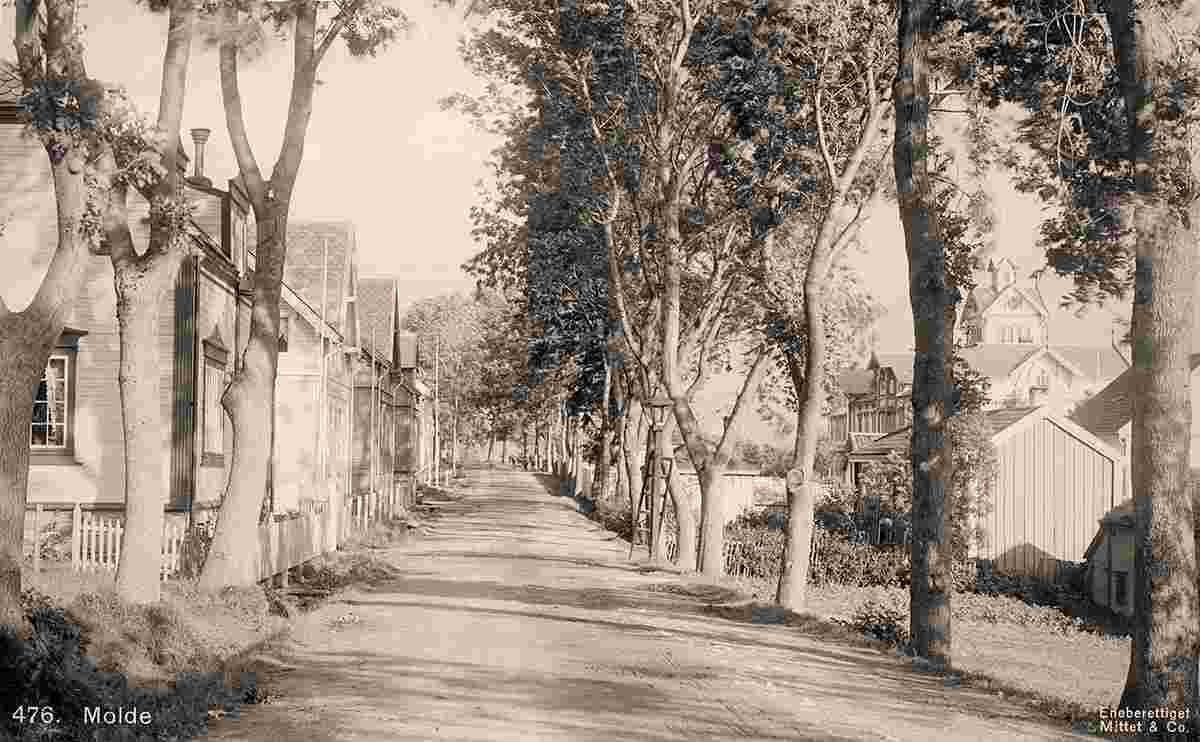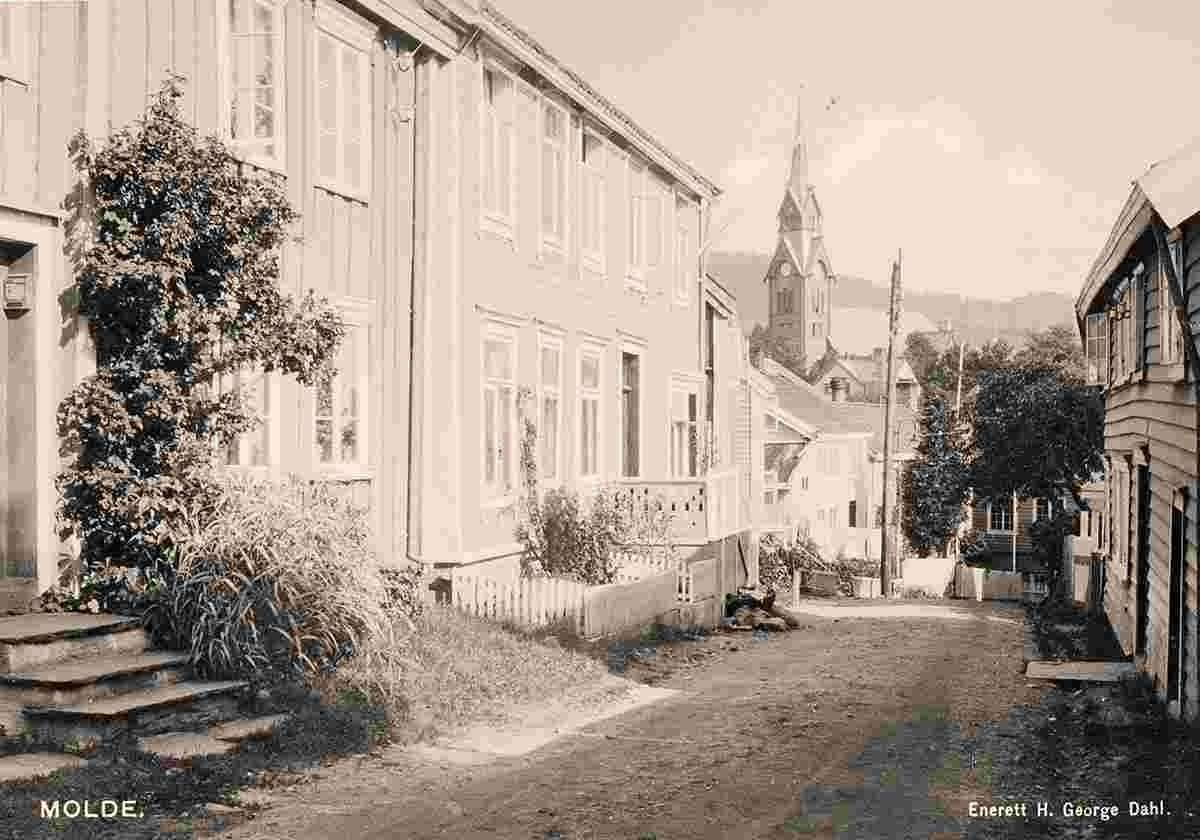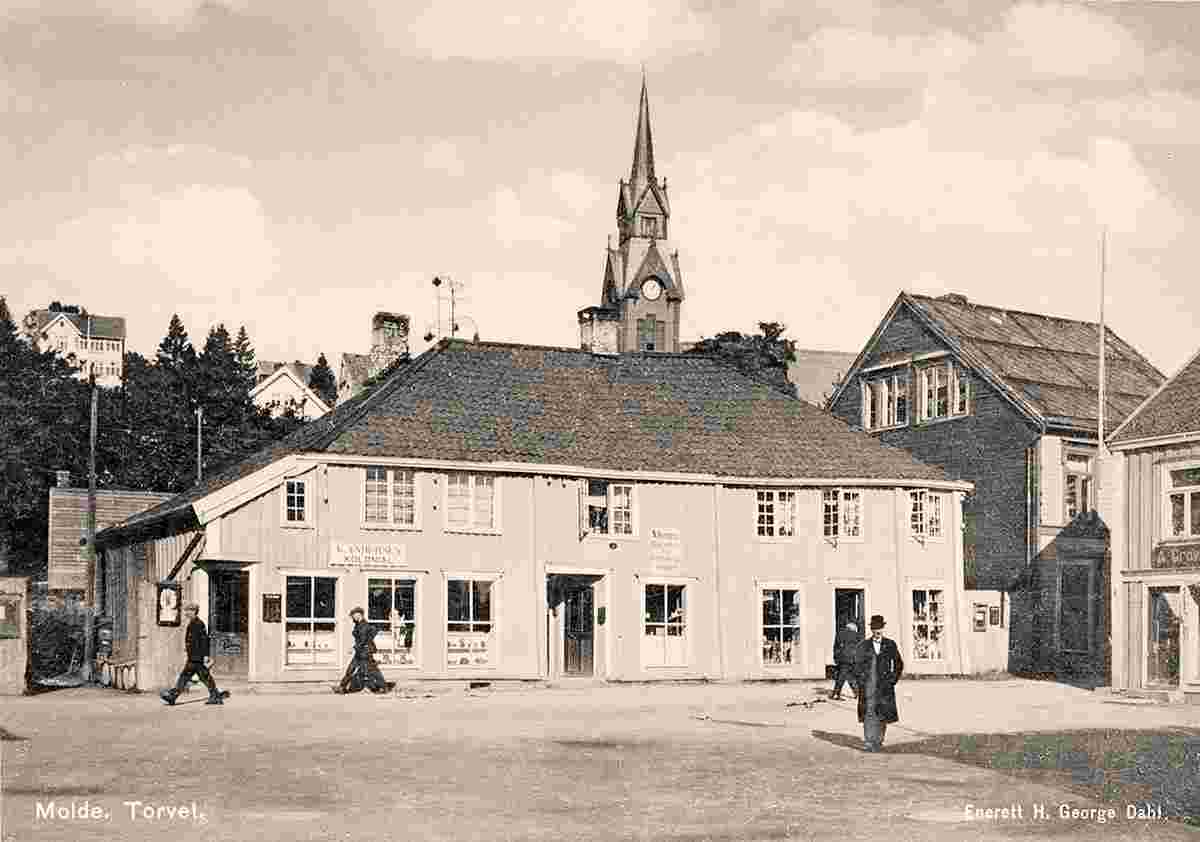Historical and old photos of Molde, Møre and Romsdal
HistoryThe city's current location dates from the late mediaeval period, but is preceded by the early mediaeval township on Veøya, an island to the south of present-day Molde. The settlement at Veøya probably dates from the Migration Period, but is first mentioned in the sagas by Snorri Sturluson as the location of the Battle of Sekken in 1162, where king Håkon the Broad-shouldered was killed fighting the aristocrat Erling Skakke, during the Norwegian civil wars. However, settlement in the area can be traced much further back in time-evidence given by two rock slabs carved with petroglyphs found at Bjørset, west of the city centre. At the eve of the 15th century, the influence of Veøya waned, and the island was eventually deserted. However, commercial life in the region was not dead, and originating from the two settlements at Reknes and Molde (later Moldegård), a minor port called Molde Fjære (Molde Landing) emerged, based on trade with timber and herring to foreign merchants. The town gained formal trading rights in 1614 as a ladested under the supervision of the city of Trondheim. During the Swedish occupation of Middle Norway, 1658–1660, after Denmark-Norway's devastating defeat in the Northern Wars, the town became a hub of resistance to the Swedes. After the rebellion and liberation in 1660, Molde became the administrative centre of Romsdalen Amt and was incorporated as a kjøpstad through a royal charter in 1742. Molde continued to grow throughout the 18th and 19th centuries, becoming a centre for Norwegian textile and garment industry. Tourism later became a major industry, and Molde saw notabilities such as the German emperor Wilhelm II of Germany and the Prince of Wales as regular summer visitors. Molde consisted of luxurious hotels surrounding an idyllic township with quaint, wooden houses, lush gardens and parks, esplanades and pavilions, earning it the nickname the Town of Roses. This was interrupted when one third of the city was destroyed in a fire on 21 January 1916. However, Molde recovered and continued to grow in the economically difficult interbellum period. A second fire, or series of fires, struck from the German air-raids in April and May 1940, which destroyed about two thirds of the town. Molde was in effect the capital of Norway for a week after King Haakon, Crown Prince Olav, and members of the government and parliament arrived at Molde on April 23, after a dramatic flight from Oslo. They were put up at Glomstua, then at the western outskirts of the town, and experienced the bombing raids personally. The Norwegian gold reserve was also conveyed to Molde, and was hidden in a clothing factory. However, German intelligence was well aware of this, and on April 25 the Luftwaffe initiated a series of air-raids. For a week the air-raid siren on the chimney of the dairy building announced the repeated attacks. April 29 turned out to be the worst day in the history of Molde, as the city was transformed into a sea of flames by incendiary bombs. Until then the church had escaped undamaged, but in the final sortie a firebomb became stuck high up in the tower, and the beautiful wooden church was obliterated by fire. After World War II, Molde experienced tremendous growth. As the modernisation of the Norwegian society accelerated in the post-reconstruction years, Molde became a centre for not only administrative and public services, but also academic resources and industrial output. After the consolidation of the town itself and its adjacent communities in 1964, Molde became a modern city, encompassing most branches of employment, from farming and fisheries, to industrial production, banking, higher education, tourism, commerce, health care, and civil administration. Origin: en.wikipedia.org | ||||||||||||
 |
Historical and old photos of Molde, Møre and Romsdal
Historiske og gamle bilder av Molde, Møre og Romsdal |
| Main page • Countries of Europa • Cities of Norway |
| Robinson Rd, CB 13862 Nassau, NP, The Bahamas |
